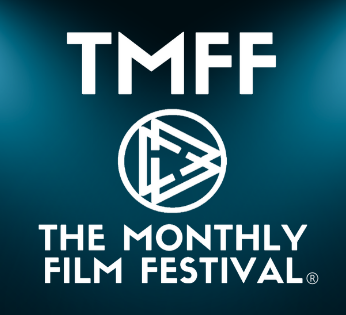In the world of cinema, poker is more than just a game of cards; it’s a powerful narrative tool that can elevate storytelling to new heights. The tension, strategy, and unpredictability inherent in poker make it an ideal device for screenwriters looking to craft compelling drama. Whether it’s a high-stakes game that serves as the film’s climax or a subtle hand that reveals a character’s true nature, poker scenes have the potential to beguile audiences and add depth to a screenplay. As the Monthly Film Festival (TMFF) continues to celebrate innovative storytelling, understanding how to effectively incorporate poker into your screenplay can set your work apart in this competitive arena.
Exploring Poker as a Cinematic Device in Screenwriting
Poker, with its intricate blend of skill, luck, and psychology, offers screenwriters a versatile tool for creating tension and drama. The game’s inherent unpredictability mirrors the uncertainties of life, making it a perfect metaphor for the human condition. In film, poker scenes can serve as a microcosm of the larger narrative, encapsulating themes of risk, deception, and ambition. By weaving poker into the fabric of a screenplay, writers can examine complex character dynamics and heighten the stakes of their story. The strategic nature of poker allows for a rich exploration of character motivations, as players must constantly assess their opponents and make calculated decisions under pressure.
Moreover, poker scenes can be used to manipulate the pacing of a film, providing moments of intense suspense or quiet introspection. A well-crafted poker scene can serve as a turning point in the narrative, revealing hidden truths or setting the stage for a dramatic showdown. The visual and auditory elements of a poker game—the shuffle of cards, the clinking of chips, the players’ expressions—can be used to create a palpable sense of tension that draws the audience in. By understanding the nuances of poker as a cinematic device, screenwriters can craft scenes that are not only engaging but also thematically resonant.
The Role of Poker Scenes in Building Character Depth
Poker scenes offer a unique opportunity to investigate into the psyche of a character, revealing their strengths, weaknesses, and hidden desires. In the high-pressure environment of a poker game, characters are often stripped of their facades, forced to confront their true selves. This makes poker an ideal setting for character development, as it allows for the exploration of themes such as trust, betrayal, and self-discovery. By observing how a character navigates the complexities of a poker game, audiences can gain insight into their personality and motivations.
The strategic nature of poker also lends itself to the exploration of character relationships. In a game where every move is calculated, the interactions between players can reveal underlying tensions and alliances. A character’s approach to poker—whether they are aggressive, cautious, or deceptive—can serve as a reflection of their broader worldview and approach to life. By incorporating poker scenes into a screenplay, writers can create rich, multi-dimensional characters that reverberate ring with audiences.
Analyzing Iconic Poker Moments in Award-Winning Films
Throughout cinematic history, poker has been used to create some of the most memorable and iconic moments in film. These scenes often serve as crucial points in the narrative, where the stakes are high and the tension is palpable. In films like “Casino Royale,” the poker game is not just a backdrop but a central element of the plot, driving the action forward and revealing key aspects of the characters involved. The intensity of the game mirrors the high-stakes world of espionage, making it a perfect fit for the film’s themes of risk and deception.
In “Rounders,” poker is portrayed as both a passion and a vice, with the protagonist’s journey through the underground poker scene serving as a metaphor for his struggle to find his place in the world. The film’s poker scenes are meticulously crafted, capturing the nuances of the game and the psychological battles between players. These moments of tension and strategy are not only thrilling to watch but also serve to deepen the audience’s understanding of the characters and their motivations.
Another example of poker’s cinematic power can be found in “The Cincinnati Kid,” where the climactic poker game serves as a test of the protagonist’s skill and integrity. The film uses the card game as a lens through which to examine themes of ambition, honor, and the cost of success. By analyzing these iconic poker moments, screenwriters can gain valuable insights into how to effectively incorporate card games into their own work, creating scenes that are both engaging and meaningful.
Tips for Incorporating Poker into Your Screenplay for TMFF
For screenwriters looking to make an impact at TMFF, incorporating poker into your screenplay can be a strategic move. To effectively use poker as a narrative device, it’s important to understand the mechanics of the game and how they can be used to enhance the story. Consider the role that poker will play in your narrative—will it serve as a central plot point, or as a metaphor for the characters’ struggles? By clearly defining the purpose of the poker scenes, you can ensure that they are integral to the story and not just a gimmick.
Additionally, focus on creating authentic and engaging poker scenes that capture the tension and drama of the game. Pay attention to the details, from the players’ body language to the sound of the cards being shuffled, to create a vivid and immersive experience for the audience. By crafting poker scenes that are both visually and emotionally compelling, you can elevate your screenplay and increase its chances of success at TMFF.
Incorporating poker into a screenplay offers a wealth of opportunities for creating tension, drama, and character depth. As a cinematic device, poker can serve as a powerful metaphor for the complexities of life, allowing screenwriters to dig deeper in themes of risk, deception, and ambition. By understanding the nuances of poker and its potential as a narrative tool, writers can craft scenes that are both engaging and thematically resonant.
As the Monthly Film Festival continues to celebrate innovative storytelling, screenwriters who effectively incorporate poker into their work can set themselves apart in this competitive arena. Whether it’s through the exploration of character dynamics, the creation of iconic moments, or the crafting of authentic and immersive scenes, poker offers a unique and versatile tool for elevating a screenplay. By embracing the art of poker in film, screenwriters can create compelling narratives that beguile audiences and leave a lasting impact









Leave a reply